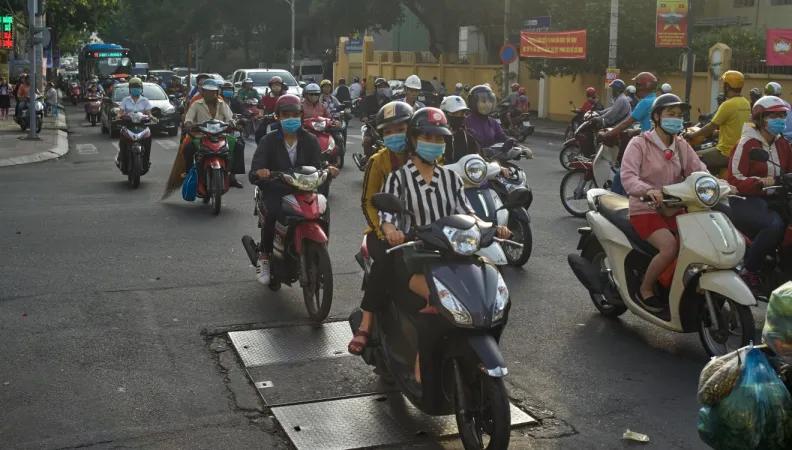Share the page
Tackling Covid-19: Vietnam's Recipe for Success
Published on

In our “Shared Innovation” series, AFD highlights innovative programs created or developed in our partner countries.
Vietnam, with its 96 million inhabitants - and despite its proximity to China – stands as an example of effective management of the Covid-19 crisis: as of 28 April 2020, the country had 270 reported cases, and no deaths.
An analysis.
Read other reports in our series: “Shared Innovation”
Despite sharing a 1,000 km-long border with China, Vietnam is one of the countries least affected by Covid-19 in Southeast Asia. This extraordinary performance is gaining attention in neighboring countries.
And yet, this seeming success comes in spite of relatively few hospital beds: the ratio per 1,000 inhabitants is lower than in European countries, standing at 3.2 in 2018, against 6 in France. To find the key to success, one must look beyond the health facilities to the government strategy. In anticipation of a possible contagion, the Vietnamese authorities applied lessons learned from the SARS crisis in 2003, and rapidly applied prevention measures across the country.
Taking Action following the First Signs
Vietnam was swift to act: just a week after the first confirmed case in Wuhan, on 23 January, the country closed its border with China and decided not to reopen schools after the Tet school holidays.
Airports were closely controlled and, as of early March, anyone entering the territory must be quarantined for 14 days.
Vietnam was also the first country after China to lock down a town - Son Loi Commune - for three weeks. It is located in the north of Hanoi, near the capital’s international airport, and has over 10,000 inhabitants. This decision was taken after a few cases were found among workers returning from Wuhan. Several districts were also closed and thoroughly disinfected after positive cases were identified.
Zero risk strategy: staking everything on prevention
Vietnam’s approach stands out as a strategy that some of the media define as “low-cost”. Upon the discovery or suspicion of a new infection, authorities and healthcare professionals have taken steps that are simple but effective, targeted and systematic.
When a person tests positive (called F0), a list is made of all the people with whom they have come into contact. These people (called F1) are immediately contacted and sent for a 14-day quarantine in closed quarters (barracks, hotels and apartment blocks requisitioned for this purpose), or in their own homes.
They are systematically tested and must inform the people with whom they in turn have been in contact. This third category of people (F2) will have to respect social distancing and, if possible, self-isolate at home for 14 days. If someone from the F1 category tests positive, they become "F0" and the process is repeated until all potentially infected people have been tracked.
The advantage of this system is that it contains infections to small "rings" of people, using various levels of quarantine and distancing to prevent further spread. It also creates "buffer zones:" even people who are potentially asymptomatic or have tested negative must self-isolate if they have been in contact with a confirmed case. What's more, the system seems to have contained the epidemic without saturating hospitals, and without the need for massive screening campaigns.
Preventing the Pandemic from Creating an Economic Crisis
Vietnam has made vast strides in reducing poverty in recent years – more than 58% of the population was living below the poverty line in 1993, as compared to less than 10% in 2016. Keen to make sure that progress is not reversed as the Covid-19 crisis upends economies worldwide, the government has introduced a number of measures to strengthen existing social safety nets: deferral of taxes and charges, additional financial support for the most vulnerable and incentives for tax credits.
“It is essential for the country to preserve its achievements in reducing poverty and combating climate change," says Fabrice Richy, AFD's Director in Vietnam.
"Vietnam is one of the only countries to have achieved the Millennium Development Goals as defined by the United Nations, and is well on track to achieving the Sustainable Development Goals. To support these efforts, we are currently in talks with the Vietnamese Government to develop exceptional budget support.”
The social and economic challenges ahead will no doubt feature at the upcoming Party Congress scheduled for next January. It will be the occasion to determine whether the country has managed not only to overcome the health crisis once and for all, but to mitigate the economic and social impact in the medium and long term.
